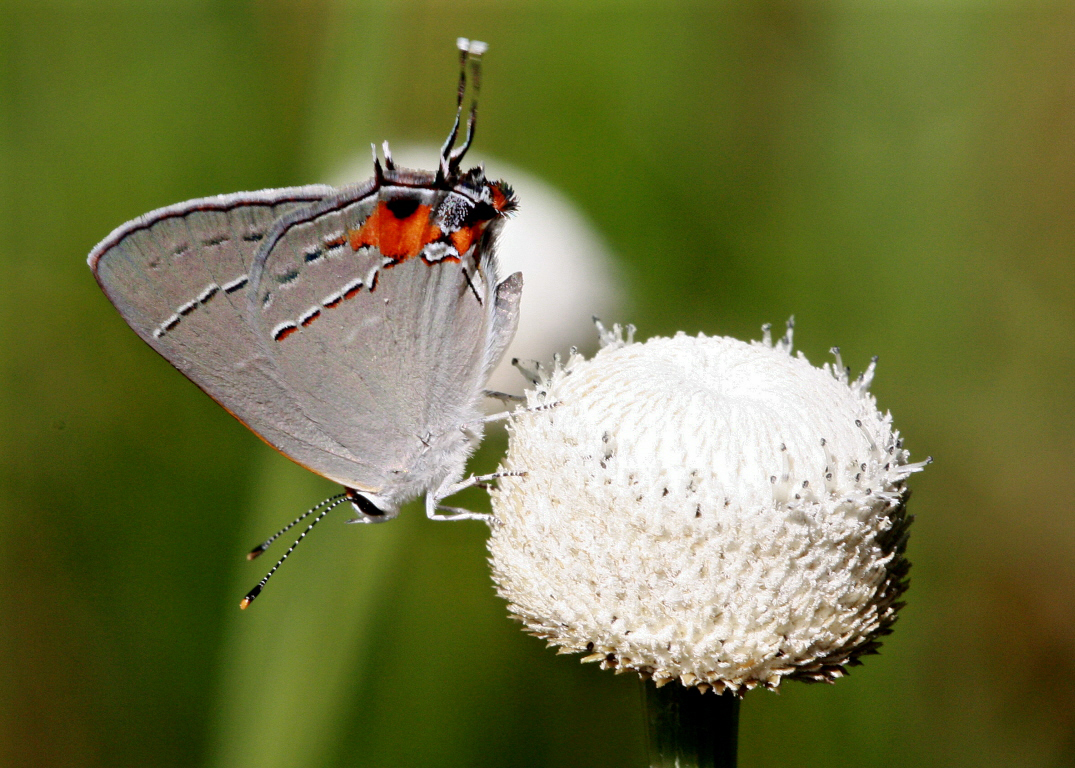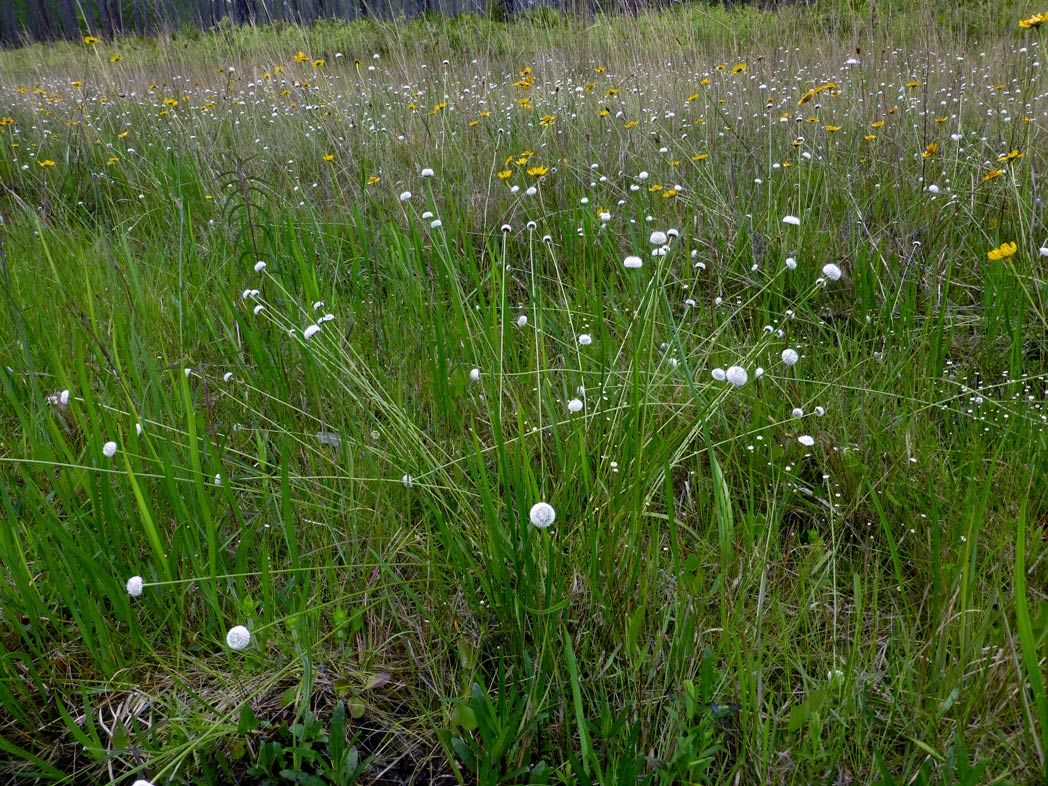Tenangle pipewort
Gray hairstreak on Tenangle pipewort (Eriocaulon decangulare) by Eleanor Dietrich. Click on terms for botanical definitions. View post as a PDF.
Tenangle pipewort (Eriocaulon decangulare) (also known as Hat pins and Bog button) is a wildflower easily recognized by its many white button-like flowers. It occurs naturally in bogs, wet prairies, freshwater marshes, wet pine flatwoods and cypress swamp edges and typically blooms late spring through fall.

Tenangle pipewort flowers are solitary, terminal and borne on sturdy ribbed (or angled) scapes that are covered in tiny soft hairs. A single plant may produce a dozen or more flowering scapes at a time. Each flowerhead is 1/2–3/4” in diameter and hard to the touch. It is composed of numerous miniscule white to grayish-white flowers arranged in a compact ball. Black anthers are visible in mature flowerheads. Leaves are linear, erect and occur in tuft-like basal clusters. The stout roots, which are often submerged in water and decomposing organisms, contain air pockets that take in carbon dioxide and aid in photosynthesis.
The genus Eriocaulon comes from the Greek erion (ἔριον), meaning “woolly,” and kaulós (καυλός), meaning “stem” or “stalk.” The species epithet decangulare (and the common name descriptor “tenangle”) refers to the ribbing or angles on the scapes, which often number 10.
Family: Eriocaulaceae (Pipewort family)
Native range: Nearly throughout
To see where natural populations of Tenangle pipewort have been vouchered, visit florida.plantatlas.usf.edu.
Hardiness: Zones 8A–10B
Lifespan: Perennial
Soil: Saturated to inundated acidic sandy soils and peat
Exposure: Full sun
Growth habit: 1–3’+ tall
Although rare in cultivation, Pipewort (Eriocaulon spp.) plants are occasionally available from nurseries that specialize in Florida native plants. Visit www.plantrealflorida.org to find a nursery in your area.

